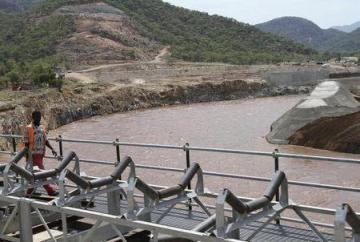Sudan proposes meeting of irrigation ministers to agree on Ethiopia’s dam impact studies
May 6, 2018 (KHARTOUM) Khartoum has proposed to hold a preparatory meeting for the irrigation ministers of Sudan, Ethiopia and Egypt to pave the road for the ministerial committee on the Grand Ethiopian Renaissance Dam (GERD) to reach an agreement on the dam impact studies.

The Sudanese proposal came at the end of a meeting of irrigation ministers in Addis Ababa on Saturday where the three countries submitted their observations and queries on the consultant’s introductory report.
During the meeting, the irrigation ministers of the three countries underlined desire to continue to cooperate in good spirit to reach an agreement on the impact studies and address concerns of all parties.
It is noteworthy that the introductory report determines the steps that would be undertaken by the consultants to complete the studies on the ecological, social and economic impact of the dam as well as the options for filling and operating the dam lake.
In September 2016, French engineering consultancy Artelia and BRL groups have been selected to undertake the dam impact studies. The U.K.-based law firm Corbett & Co was selected to manage the legal affairs of the tripartite committee.
The multi-billion dollar dam is being constructed on the Blue Nile, about 20 kilometres from the Sudanese border, and has a capacity of 74 billion cubic meters, and is expected to generate electrical power of up to 6,000 megawatts.
Egypt is concerned that the dam could reduce its quota of 55.5 billion cubic meters of the Nile water, while the Ethiopian side maintains that the dam is primarily built to produce electricity and will not harm Sudan and Egypt.
(ST)
